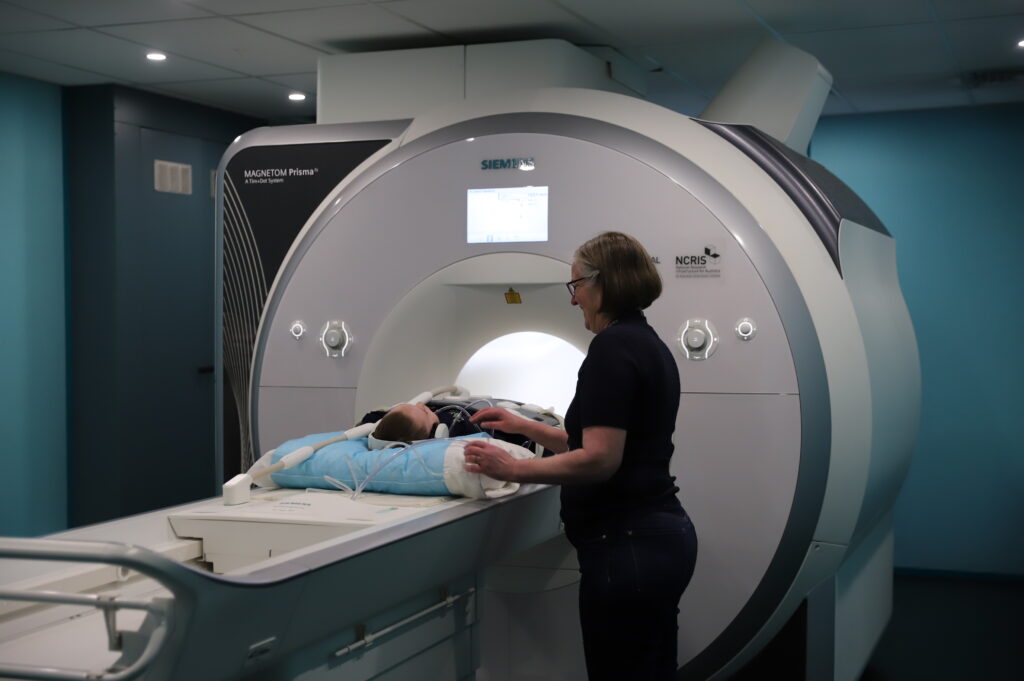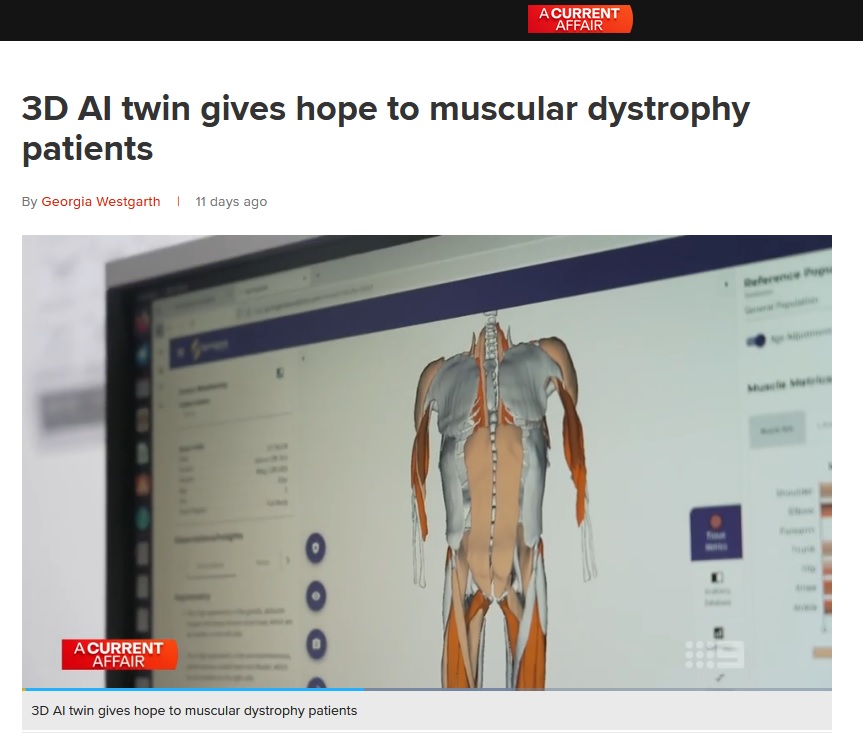Pictured above: the Priestley family; father Mark and daughter Zaharra are both affected by FSHD. Courtesy: Swinburne Neuroimaging
In a world-first, an AI-powered model for disease progression of a common type of muscular dystrophy has been developed using full-body muscle-health scans collected by the FSHD Global Research Foundation, through the Swinburne University of Technology and National Imaging Facility (NIF).
The project has leveraged the partnership’s advanced MRI expertise to conduct in-depth muscle-health studies, providing unprecedented detail in the analysis of living tissues – knowledge which will have life-changing effects for patients. Scans were collected at a range of sites across Australia, including at the lead site Swinburne Neuroimaging.

Facioscapulohumeral muscular dystrophy (FSHD) is a common type of muscular dystrophy that affects adults and children. The genetic disease causes progressive weakening and loss of muscle, affecting people’s ability to walk, talk, smile, blink and eat. Inadequate diagnostics and frequent misdiagnosis limits our understanding of exactly how many people are affected.
New scans from about 50 FSHD patients were combined with international FSHD and baseline data by US company Springbok Analytics, who developed the disease progression model. Their technology allows patients and practitioners to compare muscle size with a similar reference population and quantify asymmetry.
The new model allows clinicians and patients to see their muscle health in three dimensions and track how the disease progresses over time, representing a significant step forward in the understanding and future treatment of FSHD.

The data and insights gained from this project will be instrumental in developing a standardised MRI protocol that can be implemented across the national NIF network, and in the future the model could open up avenues for personalised medicine.
Emma Weatherley, FSHD Global Research Foundation Managing Director, lives with FSHD and is excited by the prospect of patients being able to “track how the disease progresses over time”.
“This pilot project is not just a milestone for FSHD research in Australia but a beacon of hope for everyone affected by muscle disease,” she said.
NIF CEO Professor Wojtek Goscinski said NIF was proud to be part of the collaboration.
“By leveraging our national network’s expertise and advanced human imaging capabilities with Swinburne’s leadership, we are positioned to drive cutting-edge impactful research that could transform the lives of those affected by this disease,” he said.
Listen to A Current Affair’s news story on the technology
Read more at Swinburne University of Technology
Images courtesy of the A Current Affair story and Swinburne Neuroimaging